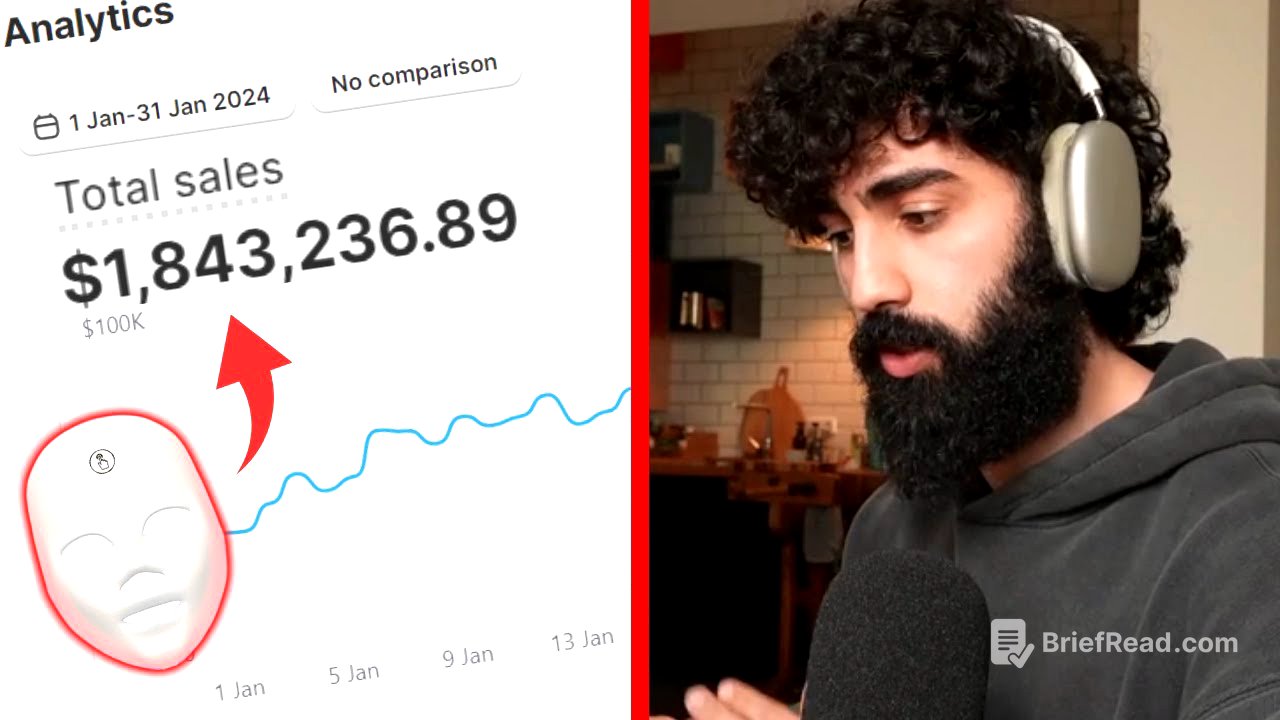TLDR;
This video explains how to create viral TikTok videos using a "hyper-dopamine" content strategy. The author shares how they generated 3 million views and $1.8 million in revenue in one month by applying a specific framework. The key takeaways include understanding hyper-dopamine content, identifying the problem, offering a solution with authority, providing a product explanation, and creating multiple variations of successful videos to increase the chances of going viral. The video also introduces Attention Academy, a platform designed to provide feedback and mentorship on creating viral content.
- Hyper-dopamine content is visually and auditorally captivating, often strange, and immediately captures the problem to be solved.
- The video structure should follow a problem-hook, solution-authority, explanation-product framework.
- Creating multiple variations of a video by changing the hook can significantly increase the chances of virality.
Introduction: Earning $1.8 Million with Viral TikTok Videos [0:00]
The author introduces the topic of generating revenue through viral TikTok videos, specifically detailing how they earned $1.8 million in January. They emphasize that TikTok is unique in its ability to generate substantial revenue from a single viral video. The author will demonstrate the specific template and framework used to achieve this success, which can be applied to any product. They highlight a high conversion rate of 5% from store visitors, which is top industry standard for e-commerce on Shopify.
Understanding the Product and Competition [0:50]
The author discusses their product, a red light therapy mask marketed towards women for anti-aging. Although the product had previously gone viral on TikTok, the author was confident they could outperform the competition with their unique content style, which they describe as "hyper-dopamine" content. They promise to explain hyper-dopamine content and provide examples to help viewers create their own hyper-dopamine videos.
Examples of Hyper-Dopamine Content [1:27]
The author shows examples of hyper-dopamine content, starting with their own hook which features a girl using an aging filter. They explain that explanation clips don't need to be hyper-dopamine, but should effectively showcase the product using user-generated content. The author also analyzes content from other creators, such as teeth whitening videos, to illustrate the key elements of hyper-dopamine content.
Analyzing Successful TikTok Content [2:30]
The author analyzes successful TikTok videos, particularly those from the brand High Smile, which frequently uses hyper-dopamine hooks. They emphasize the importance of visually alluring content that immediately identifies the problem being solved. The author points out the use of strange and weird elements, combined with specific sounds, to create a dopaminergic effect. They highlight how High Smile consistently reuses the same hooks in their videos.
The Sales Framework: Problem, Solution, Authority, Explanation, Product [4:58]
The author explains the structure of a successful TikTok video: Problem, Hook, Solution, Authority, Explanation, and Product. The hook should immediately identify the problem that the product solves. The solution should be backed by authority, demonstrating its effectiveness. The explanation should detail how the solution works using the product, and the product should be showcased in a visually alluring manner. The author reiterates that this framework is used by successful brands on TikTok.
Creating a Hyper-Dopamine Video: A Step-by-Step Guide [7:42]
The author provides a step-by-step guide to creating a hyper-dopamine video using the clips they've gathered. They start with a hook featuring a girl saying "no" to the aging filter, followed by a voiceover identifying the problem: the aging filter is based on real science. The solution is then introduced: red light therapy, backed by authority through studies and celebrity endorsements like Kim Kardashian. The author explains the product, a red light therapy mask, and addresses the problem of expensive treatments by highlighting the mask's affordability and effectiveness.
Adding Captions and Exporting the Video [11:00]
The author explains how to add and edit captions to the video using CapCut. They emphasize the importance of making the text large, readable, and visually appealing. The author adjusts the font size, color, and line breaks to ensure the captions are easy to follow. They also advise keeping in mind the area that will be cut off when uploading to TikTok. Finally, they export the video in 1080p with both video and audio selected.
The Variation Strategy: Maximizing Viral Potential [12:53]
The author introduces the variation strategy to maximize the chances of going viral. Instead of creating completely new video ideas after one fails to gain traction, they recommend creating multiple variations of the same video by changing only the hook. By creating five different hooks for the same explanation and call to action, creators can significantly increase their likelihood of going viral. The author shares their own experience of going viral with two variations of the same video.
Attention Academy: Learning Viral Content Creation [15:56]
The author introduces Attention Academy, a platform designed to teach individuals how to create viral content. They explain that learning to create viral content is difficult due to the lack of clear feedback. Attention Academy offers an extensive course and personalized feedback from experts, including creators with millions of followers. The platform aims to provide the necessary education and mentorship to help individuals create viral content for any product or service.
